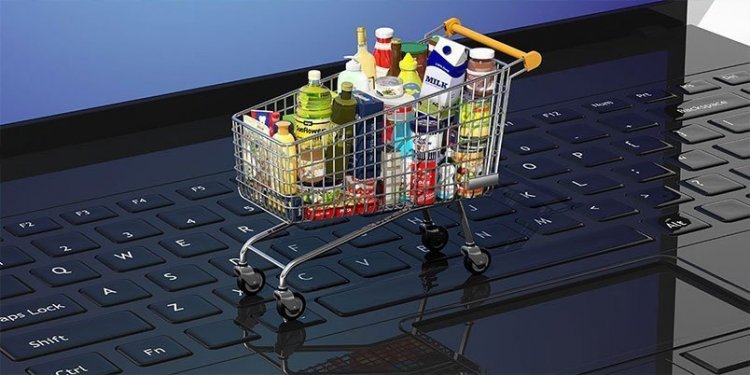Rise of E-commerce and its effect on FMCG distribution in Nepal
Explore the rise of E-commerce and its impact on Fast-Moving Consumer Goods (FMCG) distribution in Nepal. Learn about the changes and challenges in the industry.

The rise of e-commerce has had a significant impact on the fast-moving consumer goods (FMCG) industry in Nepal. In recent years, the e-commerce industry in Nepal has seen significant growth, driven by factors such as increasing internet and smartphone penetration, and a growing number of e-commerce platforms and services. As a result, FMCG companies are increasingly turning to e-commerce as a way to reach consumers and distribute their products.
E-commerce Industry Overview and Growth in Nepal
The e-commerce industry in Nepal has been growing rapidly in recent years. According to a report on internet, the e-commerce market in Nepal was worth around NPR 3 billion (approximately USD 26 million) in 2018, and is projected to repeatedly increase in future. This growth is driven by a number of factors, including increasing internet and smartphone penetration, and the growing number of e-commerce platforms and services.
Current FMCG e-commerce trends in Nepal
In Nepal, the FMCG e-commerce market is still in its early stages, but it is growing rapidly. A report on internet estimates that the FMCG e-commerce market in Nepal was worth around NPR 1 billion (approximately USD 8.6 million) in 2018, and repeatedly increase in upcoming future. This growth is driven by a number of factors, including increasing internet and smartphone penetration, and the growing number of e-commerce platforms and services.
Challenges for FMCG companies in e-commerce distribution
Despite the growth of e-commerce in Nepal, there are still a number of challenges facing FMCG companies that are looking to distribute their products through e-commerce platforms. These challenges include:
-
Logistics and delivery
Nepal has poor infrastructure and limited logistical capabilities, which can make it difficult for e-commerce companies to deliver products to consumers. -
Payment and security
The lack of a well-developed payment infrastructure in Nepal can make it difficult for consumers to make payments online, and there are concerns about the security of online transactions. -
Lack of consumer trust
Many consumers in Nepal are still not comfortable shopping online, and may be hesitant to make purchases through e-commerce platforms.
Impact on traditional FMCG retail stores
The rise of e-commerce has had a significant impact on traditional FMCG retail stores in Nepal. One of the main impacts is the decline in foot traffic and sales at brick-and-mortar stores as consumers shift towards online shopping. Additionally, e-commerce platforms are able to offer a wider range of products at competitive prices, which can be a major factor in drawing customers away from traditional stores.
Another impact is that, with the growth of e-commerce, traditional retailers are facing increased competition from online retailers. This competition can lead to a decline in profitability for traditional retailers, and in some cases, it can lead to store closures. Furthermore, retailers that have not adopted e-commerce platforms may find it increasingly difficult to attract and retain customers as consumers become more accustomed to the convenience and variety of products available on e-commerce platforms.
In order to combat these effects, many traditional FMCG retail stores have started to adopt e-commerce platforms and strategies in order to remain competitive in the market. This includes creating their own online platforms, partnering with e-commerce platforms, and implementing click-and-collect options for customers.
Successful FMCG Ecommerce Case Studies and Strategies
Despite the challenges, there are a number of FMCG companies in Nepal that have been able to successfully navigate the e-commerce market and distribute their products through online platforms. Some examples of successful FMCG e-commerce case studies in Nepal include:
-
Sastodeal
Sastodeal is one of the leading e-commerce companies in Nepal, and it has a wide range of FMCG products available for purchase on its platform. The company has been successful by focusing on providing a wide range of products at competitive prices, and by offering convenient delivery options to customers. -
Daraz
Daraz is another leading e-commerce company in Nepal, and it has a wide range of FMCG products available for purchase on its platform. The company has been successful by providing a user-friendly platform, and by offering a wide range of products at competitive prices. Additionally, Daraz offers various payment options and easy return policies, which have helped to build consumer trust.
-
Bhatbhateni
Bhatbhateni is a well-established retail store in Nepal that has been able to adapt to the e-commerce trend by creating its own online platform. The company's online platform offers a wide range of FMCG products and provides a convenient shopping experience for customers.
Comparison with Other Countries in the Region
Compared to other countries in the region, Nepal's e-commerce market is still in its early stages. However, the growth of e-commerce in Nepal is similar to that in other countries in the region, such as India and Bangladesh. In these countries, the e-commerce market has been growing rapidly, driven by factors such as increasing internet and smartphone penetration, and a growing number of e-commerce platforms and services.
Future potential of FMCG e-commerce in Nepal
The future potential of FMCG e-commerce in Nepal is significant. The growth of e-commerce in Nepal has been driven by a number of factors, including the increasing number of internet and smartphone users, the availability of e-commerce platforms and services, and the growing consumer demand for FMCG products.
As more people in Nepal gain access to the internet and smartphones, it is likely that the number of e-commerce users will continue to grow, which in turn will drive the growth of the e-commerce market. Additionally, as the number of e-commerce platforms and services increases in Nepal, it will become easier for consumers to shop online, and this will further drive the growth of the e-commerce market.
Furthermore, the growing consumer demand for FMCG products, coupled with the convenience and variety of products available on e-commerce platforms, is likely to lead to more consumers choosing to shop for FMCG products online. This will create opportunities for FMCG companies to reach more consumers and distribute their products through e-commerce platforms.
Overall, the future potential of FMCG e-commerce in Nepal is significant, driven by the factors such as increasing internet and smartphone penetration, the availability of e-commerce platforms, and growing consumer demand for FMCG products. As the e-commerce market in Nepal continues to grow, it is likely that more FMCG companies will explore the e-commerce market as a way to reach consumers and distribute their products.
In conclusion, the rise of e-commerce in Nepal has had a significant impact on the FMCG industry. While there are still challenges for FMCG companies looking to distribute their products through e-commerce platforms, there are also a number of successful case studies and strategies that suggest the potential for future growth in this market. As the e-commerce market in Nepal continues to grow, it is likely that more FMCG companies will start to explore the e-commerce market as a way to reach consumers and distribute their products.
What's Your Reaction?




































































































